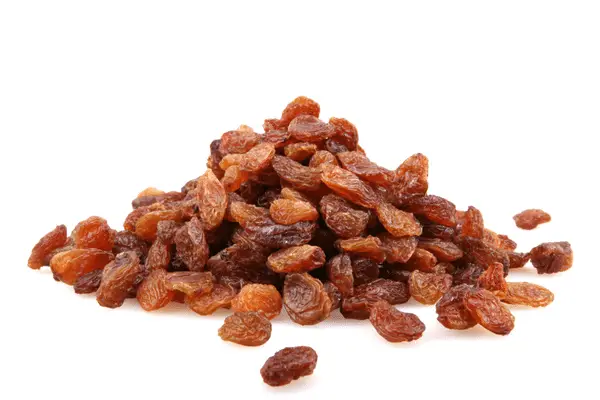The faded yellow, purple, or brown morsels known as raisins are grapes that have been dried in the sun or in a food dehydrator. Raisins are usually used as a salad topping, mixed into oatmeal, yogurt, granola, or cereal. This drying process focuses on the nutrients and sugars in grapes, making raisins nutrient and calorie-dense.
Raisins came from the Middle East before making their way to Europe, where they were especially famous among the Romans and Greeks. Historically, raisins were used as awards in sporting events, currency, and to treat ailments like food poisoning. Today, raisins are available at more supermarkets and come in various colors depending on the drying process used.
Golden yellow raisins are usually added to baked goods, while brown and red varieties are famous for snacking. Raisins are a nutrient-dense food that’s minimum processed, with no added ingredients or preservatives. But they are also rich in sugar and calories, so they should only be consumed in moderation.
What is a glycemic index?
The glycemic index is a value used to measure how much certain foods raise blood sugar levels. Foods are arranged as low, medium, or high glycemic foods and ranked on a zero to a hundred scale. The lower the GI of a particular food, the less it may affect your blood sugar levels. Here are the three glycemic index ratings:
- Low: 55 or less
- Medium: 56–69
- High: 70 or above
Foods high in carbs and sugar are digested more rapidly and often have a high GI, while foods high in fat, protein, or fiber typically have a low GI. Foods with no carbs are not assigned a GI and include seeds, meat, fish, poultry, nuts, herbs, oils, and spices. Other factors that affect the GI of food include its type of sugar, ripeness, cooking method, and amount of processing it has undergone. Remember that the glycemic index is different from the glycemic load.
Raisins glycemic index

Does raisin have a high glycemic index than pistachios?
The pistachios’ glycemic index (GI) equals 15, classifying it as a low GI food. Raisins have a glycemic index value between 49 and 64, ranking them with a low to medium glycemic index score. So, raisins have a higher glycemic index than pistachios.
Does raisin have a high glycemic index than berry?
Raisins have a glycemic index value between 49 and 64, classifying them as low to medium glycemic index scores—fresh strawberries, blackberries, blueberries, and raspberries all score below 40. So, raisins have a high glycemic index than berry.
Does raisin have a high glycemic index than peach?
Peaches are packed with vitamin A and C, iron, and potassium and have a glycemic index of 42. Raisin has a glycemic index of 49 to 64 which is high than peach. So, raisins have a high glycemic index than peach.
Does raisin have a lower glycemic index than cantaloupe?
Cantaloupe has a high glycemic index of 65. Still, because it is mostly water, a standard 120-gram serving has few calories and carbohydrates, which results in a very low glycemic load score of 4. Raisins have a glycemic index of 49 to 64, lower than a cantaloupe. So, raisins have a lower glycemic index than a cantaloupe.
Are raisins suitable for people with diabetes?
Raisins contain no cholesterol, fat, or saturated fat and are loaded with health-promoting nutrients like potassium, fiber, and antioxidants. These qualities make raisins the best food choice for people with diabetes and healthy individuals.
How many raisins raise blood sugar?
One serving of raisins for people experiencing diabetes should contain 15 grams of carbohydrates and about two tablespoons of raisins. Unless you eat large amounts of raisins, they won’t significantly raise your blood glucose levels.
How many raisins should I eat a day?
Raisins should not exceed 40 to 50 grams per day. More raisins can harm our digestive system. Raisins are rich in fiber and can help digestion, but too much fiber can damage the system and prevent absorption of other nutrients.

